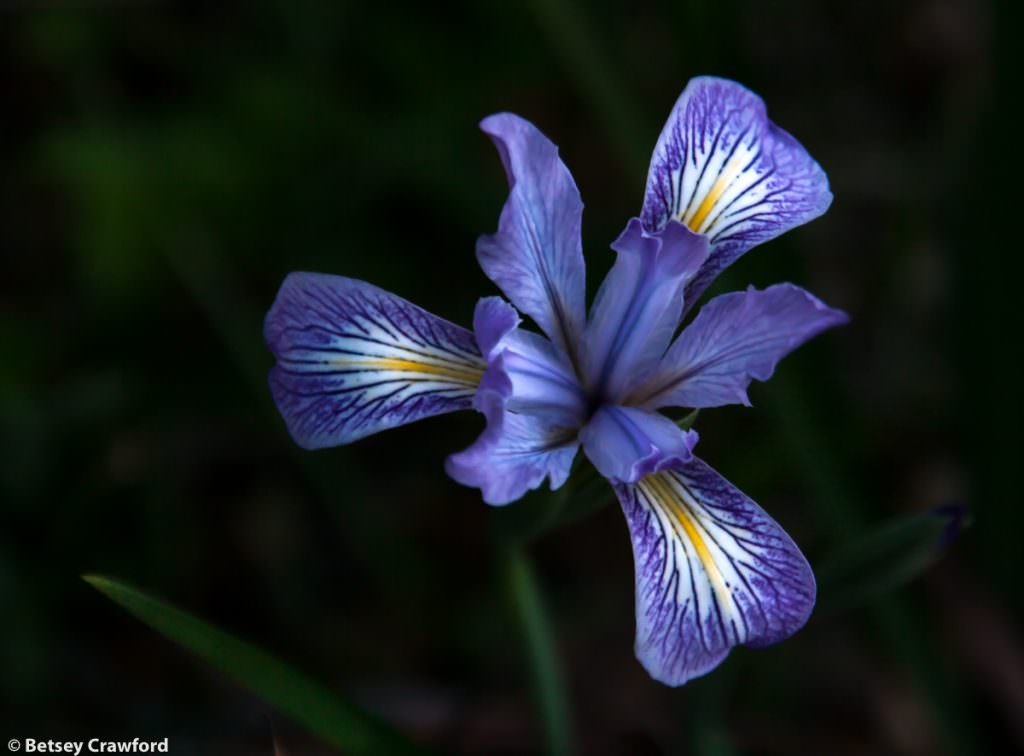
I’m indiscriminate in my love for flowers. There are few that I don’t like, and many that I love. But there is something about my feeling for irises that sets them apart. Which is interesting, because I don’t find them to be the prettiest of flowers, or easy to deal with.
As garden plants, they are fleeting, leaving you with a mass of sword-shaped leaves to contend with for the rest of the season. They grow from horizontal rhizomes, which need to be divided frequently to keep the flowers coming. Their color range is limited. Native irises are often limited to whites and shades of purple. Bearded iris garden cultivars can be shades of yellows, peaches, and maroons.
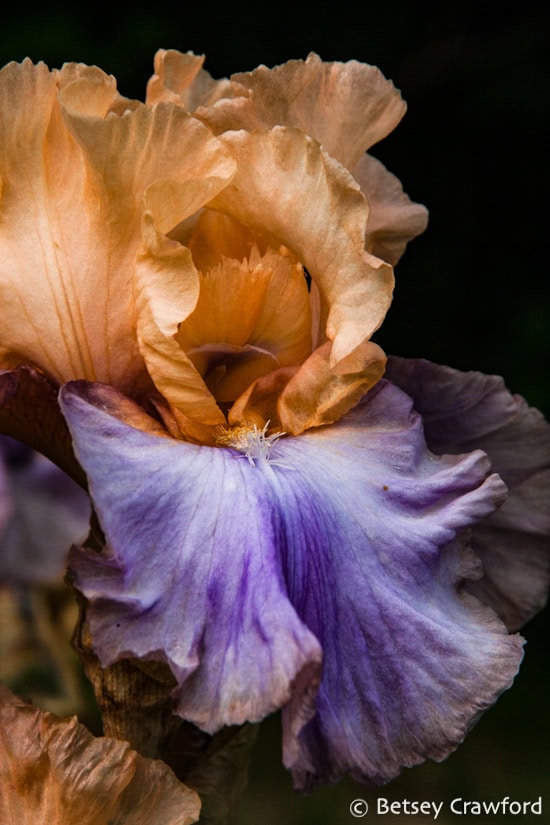
Unlike roses or peonies, which open slowly into luscious, inviting, petal-filled bowls, irises are architectural. Though beautiful and elegant, they are a bit stiff. They start as sword-shaped buds and then open so quickly that I watched last spring as the petals of one almost snapped into place.
They are with us for a few days and then fade. That swift passage and their rigid stems make them difficult cut flowers. As photography subjects, they can be frustrating. Their stiffness and multiple planes make them relatively unphotogenic. It’s hard to find good angles and get all of their ten, often moving parts into focus.
And yet I love them. I am far from alone in this love. For centuries, they have been one of Europe’s most popular garden flowers. Even in Linnaeus’ eighteenth century, gardeners had cultivated so many colors that he named them after Iris. She was the Greek messenger goddess who journeyed to Earth on rainbows.
The Japanese cultivated and painted them. Leonardo da Vinci, Vincent Van Gogh, and Claude Monet, among many others, painted them. Chinese brush painting has a calligraphy devoted to them. Georgia O’Keeffe dove into their most intimate parts. They are found in ancient Egyptian palaces and Greek frescoes dating from 2100 BCE.
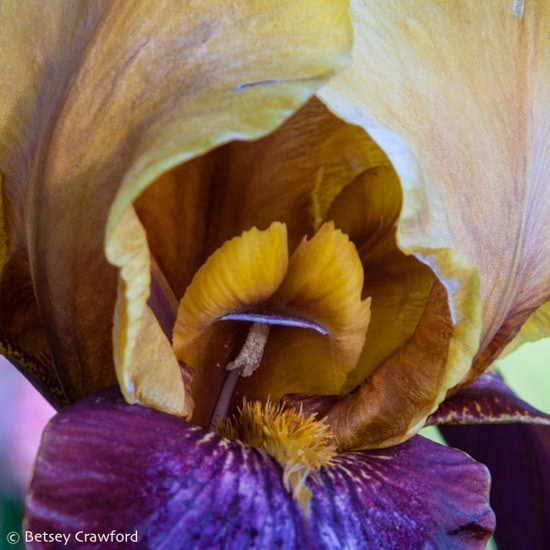
As with most flowers, I prefer the simpler, native forms found in their native places. But the complex bearded cultivars bred for gardens are beautiful and fascinating. And, as you can see from the photo above, make it easy to spy on the iris’ sex life. At the top of the hanging sepals, the falls, is a “beard” of filaments. This lies between the upright blades of the petals, or standards.
This inviting doorway, often marked by vividly colored nectar guides, gives pollinating bees plenty of room to land and a clearly marked way in. As they arrive, they brush against the stigma, the tiny, purple horizontal shelf above the beard. Here, they deposit the pollen carried from the last flower, thus starting the fertilization process.
Then, as they sip nectar, more pollen from the anther tucked under the stigma collects on their bodies. On leaving, they back out, avoiding the stigma, so they don’t lose their new load of pollen.
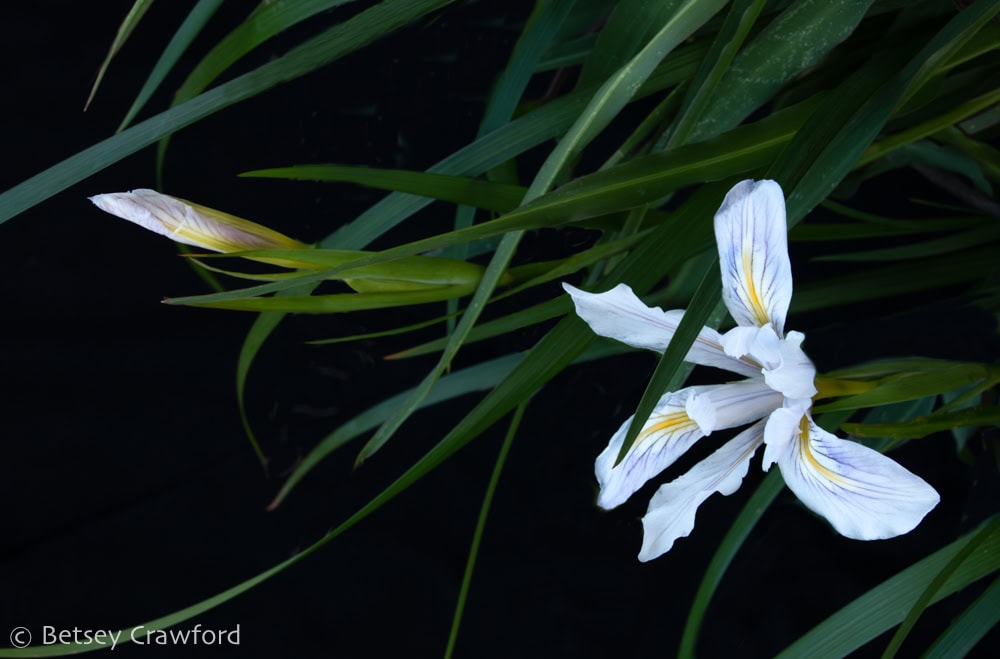
The native irises are simpler, beardless, smaller, and finer textured than the garden varieties. The standards and falls are less opulent, as well as less colorful, being largely limited to pure white, creams, lavenders and purples. I spent many years on the eastern end of Long Island, in New York. There, the blue flag, Iris versicolor, was a rare and lovely sight. I was thus unprepared for my first spring on the Pacific coast.
The central California natives are mostly Iris douglasiana. They produce nectar for their long-tongued, pollen-laden bees in three tubes formed as the sepals and petals curve into the ovary. Wind is another pollinator, with plenty available. They colonize open meadows and woods vegetatively, spreading via their rhizomes.
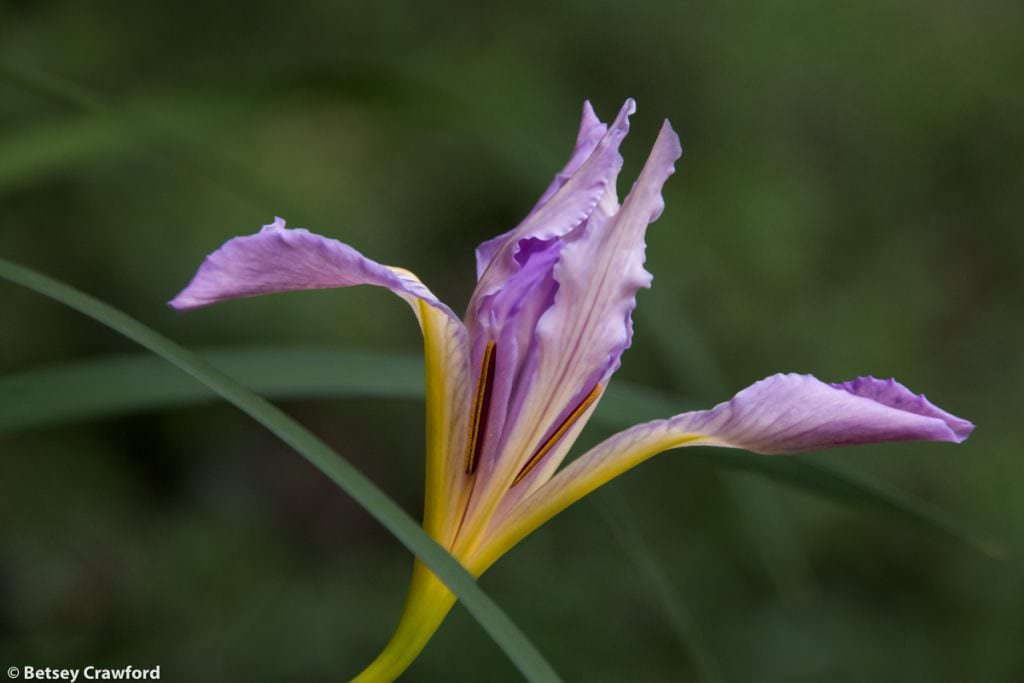
All this reproductive vigor means that in March and April, the California coastal hills are an iris addict’s dreamscape. Though individual flowers last only five days, more keep coming. You can walk among them for weeks, depending on the places you go.
The more they spread out their blooming, the more nectar the community produces to attract bees, and thus more seeds get fertilized. To discourage bees from visiting more than one flower per stem, irises stagger their opening. Then they pool tempting nectar in the open flower.
With no other options on that stem, bees take their pollen load to neighboring flowers. This approach strengthens the colony by cross-pollination and often creates hybrids by crossbreeding with neighboring species.
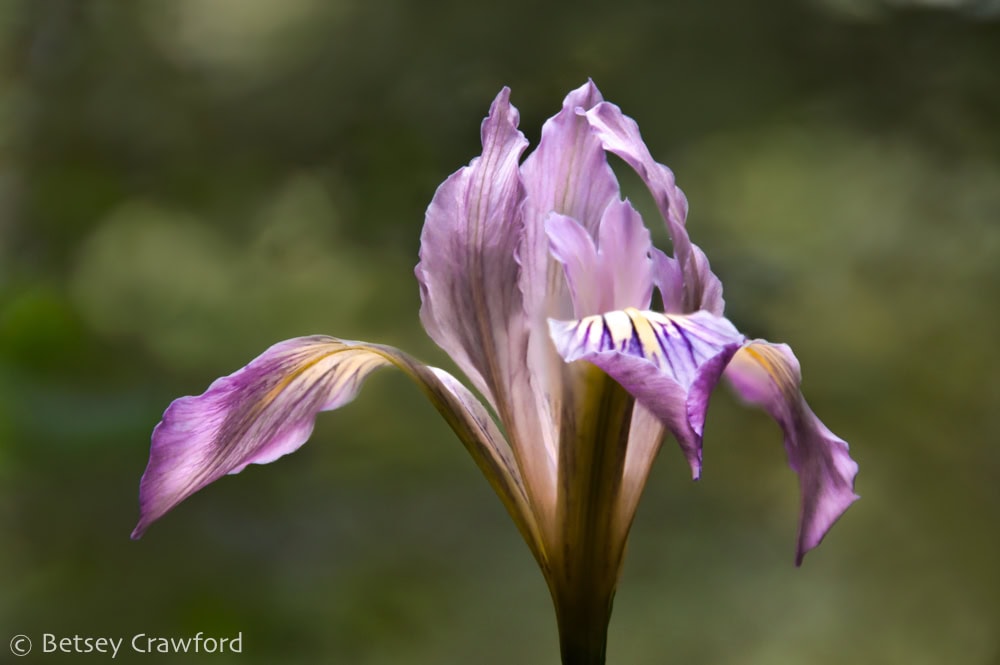
Producing such large and intricate flowers creates an advantage in attracting and accommodating pollinators, but takes a lot of energy. Iris need large stores of sugar tucked in their rhizomes. To do this, the upright leaves evolved to catch the sun from all directions. They are among the few that photosynthesize on both sides, rather than just the top.
All this evolutionary intelligence means that irises have found homes on every continent, and almost every state and province in North America. Though native stands are threatened, as ever, by bulldozers and the loss of pollinating bees, the existing flower communities are strong and resilient.
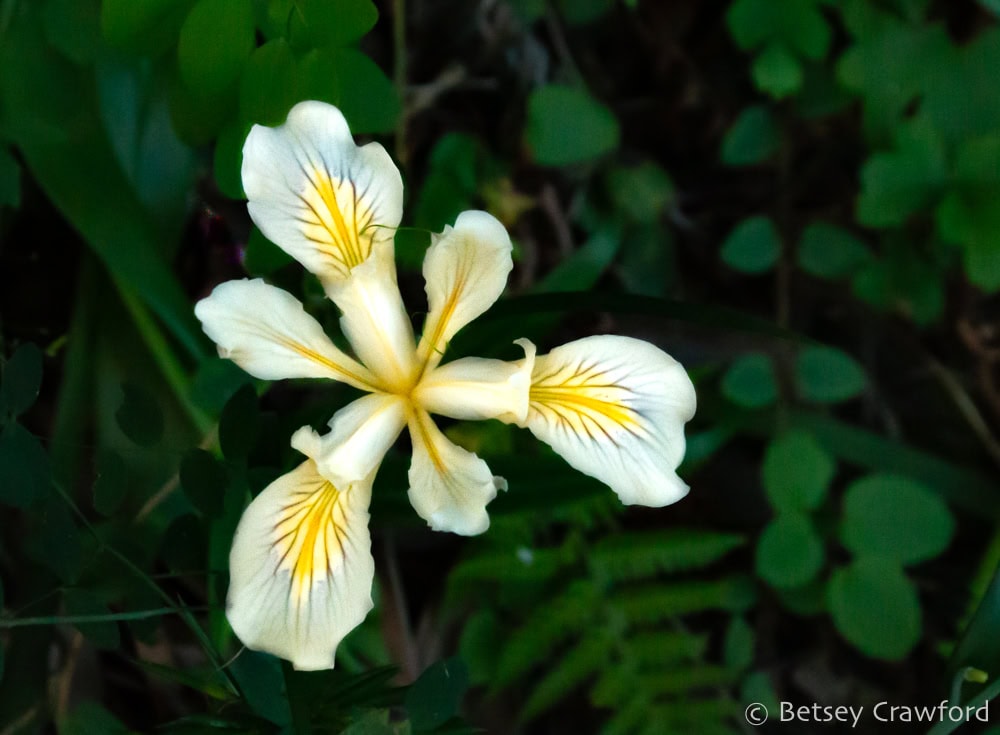
These details explain how the flowers grow and prosper, but they don’t explain irises, and there lies the mystery. These evolutionary choices are themselves mysterious. Why upright petals? Stiff stems? Purple and not orange? Why attract bees and not flies? Those are all fascinating to ponder.
Yet flowers, like the rest of us, are not their reproductive habits, their petals, their relationships to bees. They are not their beauty or their extraordinary ability to turn pure light into sugar.
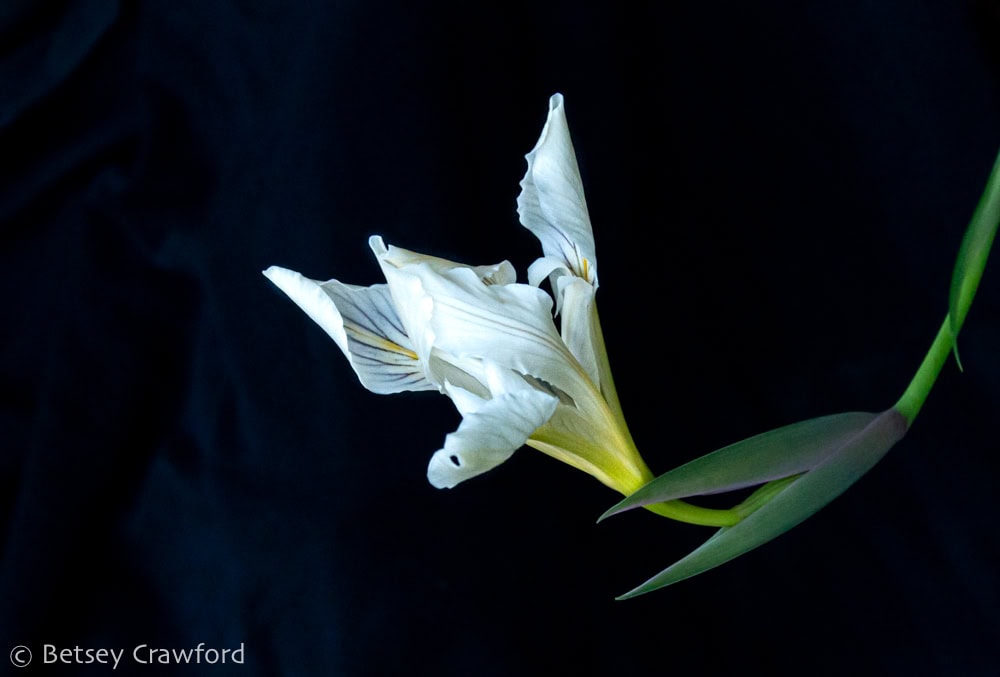
They are voices of the great forces that have brought — and are still bringing — the whole cosmos into being. Their alluring beauty isn’t designed for us; they preceded us by 130 million years. We, more likely, were designed for their benefit, with the right eyes and brains to perceive and love them.
Why would we evolve to love them? Is loving beauty part of the design, to keep us attached to life and the earth we arose from? Is it part of the Earth’s ability to protect herself? In early 2017, President Obama added 6,230 acres of land to the California Coastal National Monument. There is science in these decisions, relating to issues like marine and coastal health. There are considerations of the public good, the environmental benefit, the preservation of natural treasures.
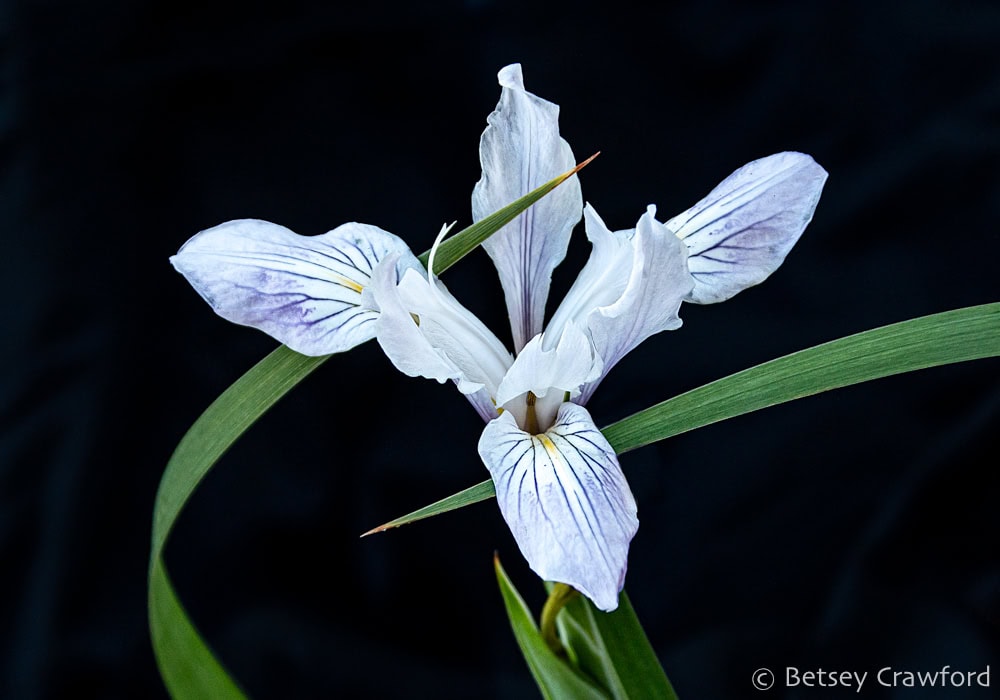
But it’s not abstract theory that inspires us to treasure the beauty of the world. It’s the utter gorgeousness of the planet itself that drives people to say, don’t bulldoze this. Don’t make this a parking lot, don’t drill an oil well here. We have certainly not paid enough attention and have let go of enough treasure to break our hearts anew every day. We need plenty of theories to even partially mitigate our losses.
But ideas did not create the impulse to preserve the coast. It came from standing on the bluffs with the wind off the sea, the waves crashing below, knee deep in irises, deeply in love.
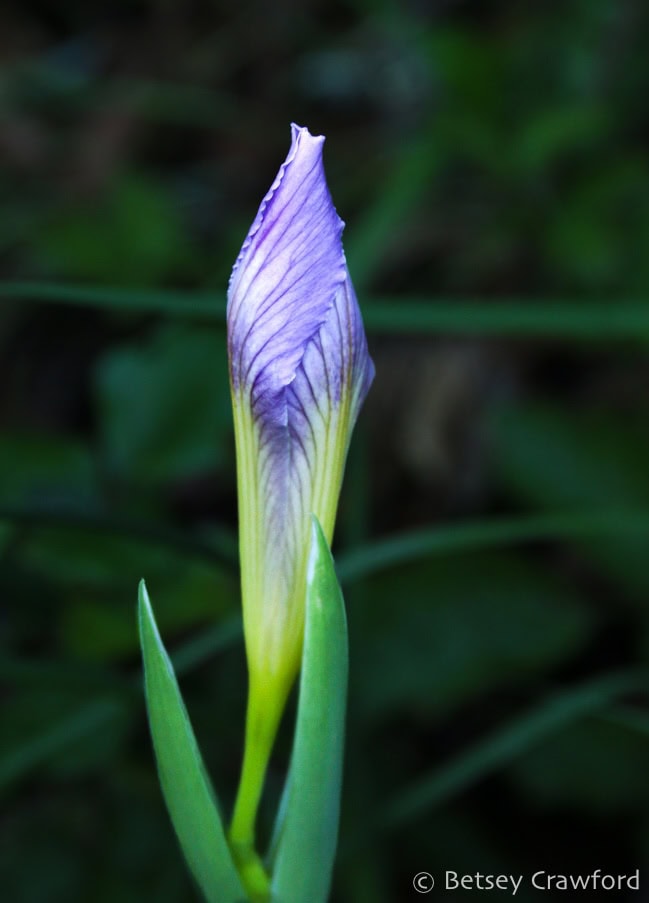
~ RELATED POSTS ~

TREASURING BEES, SAVING THE WORLD
It had never occurred to me to do it, but when a friend invited me to a beekeeping class, I said, “Of course.” So there we were, in downtown San Francisco, suited up and holding beehive frames, knowing that keeping bees is keeping the world.

NATIVE PLANTS: THE GENIUS OF THEIR PLACE
I often remember the spirit of a place by its plants. They tell a complex story about their world: scents, bird song, sighing wind, the feel of the air, the rock and soil under my feet. They hold the history and, I hope, the future of the places where I find them.

TRANSCENDENCE ON THE HEADLANDS
One of the most transcendent moments of my life happened on the Marin headlands. I hiked uphill, looking for wildflowers. At dusk, I reached the top. The silvery Pacific lay before me. Everything changed suddenly.
Betsey, beautiful writing, beautiful photos. I so look forward to reading your essays and thoughts on the natural world. I too am a lover of Iris’s and am in heaven now hiking the trails of Mt Tam each week seeing and photographing their flowers! I share your writings with friends and they love them too!
Thanks so much, Jim. I’m away from Marin this spring and missing the avalanche of wildflowers. I found Thollander’s Back Roads, by the way.
I have been reveling in the array of irises in the hills around our new house. They are everywhere. Now I know so much more about them. I have come to see how the amount of sun they get is related to their color. Light yellow in the shade, deep purple in the open sun. I am so thankful for the world you illuminate.
Thank you so much, Cara. I’ve never associated the color with more or less sunlight but thinking about it, that’s what happens.
Betsy – How I love the mornings when I can curl up with a blanket and a cup of tea and have a leisurely opportunity to carefully read your posts. So much beauty and knowledge. I love irises, too, but I rarely ponder the magical dance of bees … and this makes me want to run away to the mountains with a sketchpad, watercolors and journal. Thank you again for another sweet read.
Love imagining you curled up with tea and Betsey’s words. I’ve just slurped them up. This evening. Yum!
I hope you did run to the mountains with art supplies in tow! Or even just outdoors. Thank you so much, Sue.
You are able to do what one of my other favorite writers, Charlie Pierce, does when he’s at his very best: I’m just reading along, noting all the clarity, the general wisdom, the graceful use of language to blend “facts” and point of view… And then – BOOM! – that last sentence… and I am in sudden and unstoppable tears. And it’s always a weeping of realization, of gratitude, of being “reminded” of what really matters… Of what really IS…
And then there are your photographs… If we were put on this planet to notice the beauty of flowers, then surely you are put here to take their pictures.
You’re the Pete Souza of the natural world!!
MLAA
This comment has me in tears and laughing at the same time. Thank you, dear friend. It’s an honor to be told I remind you of what matters.
Betsy, beautifully written, as always. I was reminded of the Siberian irises I had in my Middlefield, Connecticut, garden – deep purple and pure white. By the time we moved to SC I had quite a large bed that allowed me to cut and bring in their lovely blossoms. They last for such a short time but their beauty inspires and lingers.
Thank you, Kathy. I loved my Siberian irises, too. But, oh, they were fleeting. One day a gorgeous sweep of them, a few days later gone. They take existential fortitude!
It’s always wonderful for me to read of your impressions, having arrived in mid-life to the wild parts of these lands that I was raise in. My dad was a trained botanist and a card-carrying member of the California Native Plant Society. He was always pointing out this or that native flower – but this was all before I became tuned in to beauty as I am at this point in my life. I remember being amongst *fields* of wild iris, intensely purple, out on the coast and thinking not a whole lot of it. But through your eyes and with your love of them, I’m exclaming *back* in time! Thank you for opening me to appreciate it even more deeply.
Thank you, my dear. Nothing makes me happier than people telling me they see something differently or anew.
I’m definitely deeply in love with your writing — as well as the beauty you write about. It takes a special talent to bring that beauty alive in two art forms, giving us the opportunity to appreciate the original beauty over and over, even more. ????????????
Thank you for this beautiful comment! Makes my day.